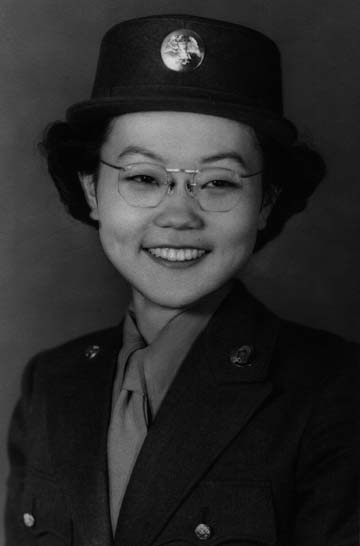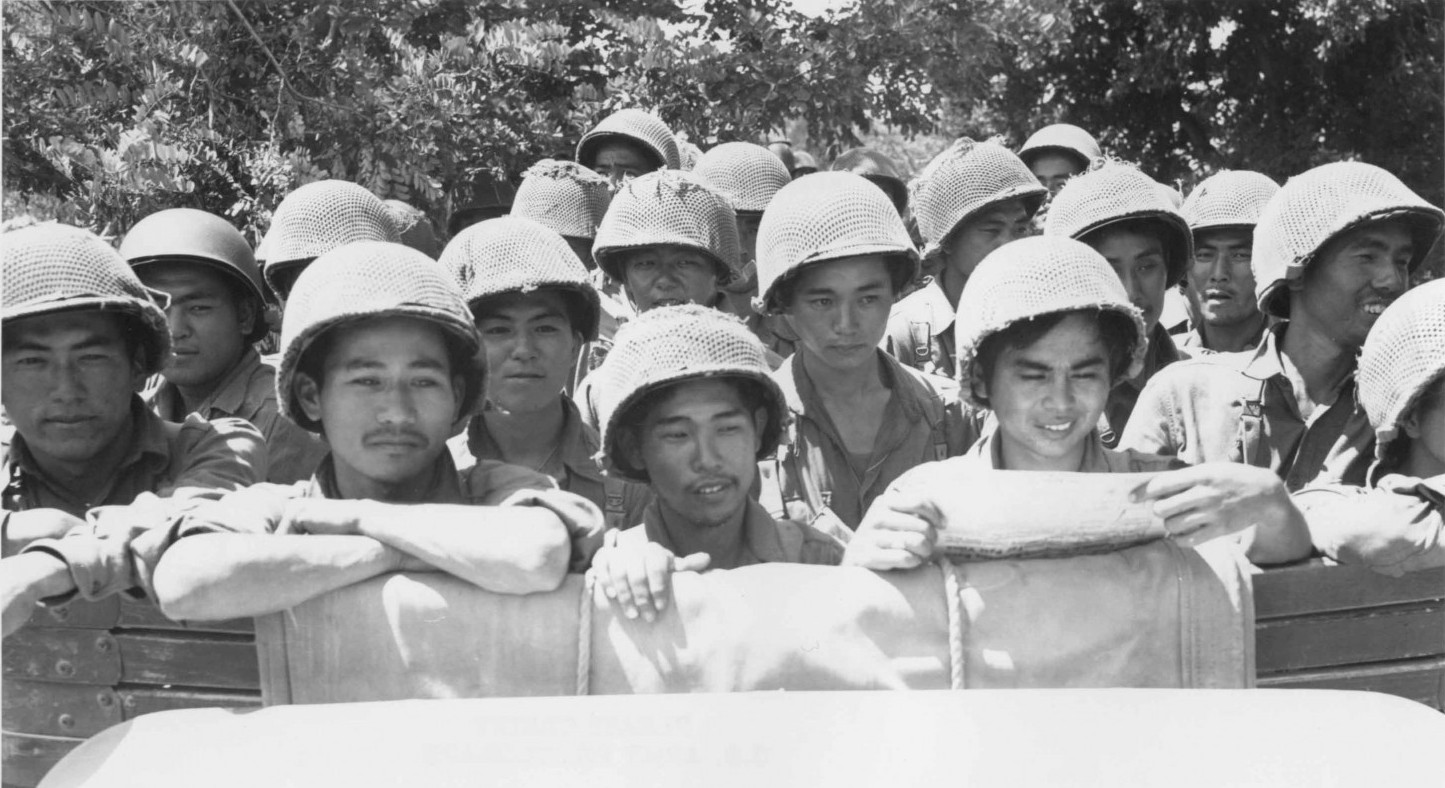Post written by Summer Espinoza, Director of Archives and Special Collections at GFBNEC
Sue Kato was a self-identified tomboy as a child. She grew up in Platte, Nebraska in what she perceived as a diverse community for its size. She lost her mother at a young age and her father was a farmer with land in Colorado and who was a share-farmer in Platte. She attended Japanese language school in the summer months and wore a lot of denim, well, because she liked to play. In high school she became active in the Girl Reserve, Latin Club and Pep Club. In Girl Reserve, she got a knack for stamp collecting, which later translated into a hobby for scrapbooking. I am thankful that she developed this hobby and you will understand why in a few moments.
After high school she was a bookkeeper at a tire re-tracking business at which point she decided she wanted join the Women’s Army Air Corps. She did not initially hear back from the army and later learned that the renamed Women’s Army Corp was now accepting applications from Nisei women, she reapplied and began her service on December 13, 1943.
Fast-forward seventy three years and imagine you are a historic investigator, someone who is looking to understand and share the Japanese American experience in World War Two with anyone and everyone. Now, imagine coming across this very large scrapbook, obviously aged and with a note, “Donated by Sue Kato.” In addition to being an investigator, you also are someone who works with the largest Japanese American Nisei veteran oral history collection known in the world, so first order of business—do we have an oral history for this woman? Yes! You try to contain your excitement. You open this scrapbook and see layers upon layers on every page. There are letters, faded handwritten notes on the scrapbook pages, Women Army Corps brochures and pamphlets, newspaper articles, currency, V-Mail, programs for musical performances, original photographs of Women Army Corps’ members and all of these are intact and little sign of use. Some of these letters are on rice paper, folded meticulously and you do not dare try to unfold it no matter your excitement; you know it is too fragile.
Sue Kato spent three years in the Women Army Corps. Basic training began in Fort Des Moines, Iowa, followed by Fort Devens, Massachusetts and language training at Fort Snelling, a stint at Camp Richard, Maryland and finally to Fort Myers where she was part of an allied forces translation team.

Sue Kato may not have been faced with military combat, but she was touched by the hand of fear and hatred by her fellow WACs and military personnel:
The first day, we were in Fort Des Moines, new recruits… I go to my closet and my civilian clothes, overcoat and outfit are on the floor and my shoes are kicked in the corner. And I was startled and I said, “Who did this?” And a tall slim WAC, about three rows of our bunks came quietly and she says, “I did.… One of your kind shot and killed my only brother, he was a naval officer. … I said, “I was born in the States, in Nebraska, and I’m an American just like you.”
Kato recalls another incident walking into a military hospital.
“They saw this oriental in uniform and I had to walk down this long corridor and all these GIs, injured GIs sitting there you know. And I’ll never forget the feeling, their eyes just, just burned into me.”
Come back with me again to 2016 and now you have seen this oral history and you have only scratched the surface of this scrapbook. You now have the tools to share this knowledge with others. This rich content is exactly what people in my field live to experience and we cherish any opportunity to share. Sue Kato was a courageous woman who volunteered because she felt compelled to serve her country first as a clerk and then as a translator. She lived a life of service working for the City of Long Beach. Sue Kato was born in 1921 and passed in 2011, but we will continue to share her legacy in the archives.


